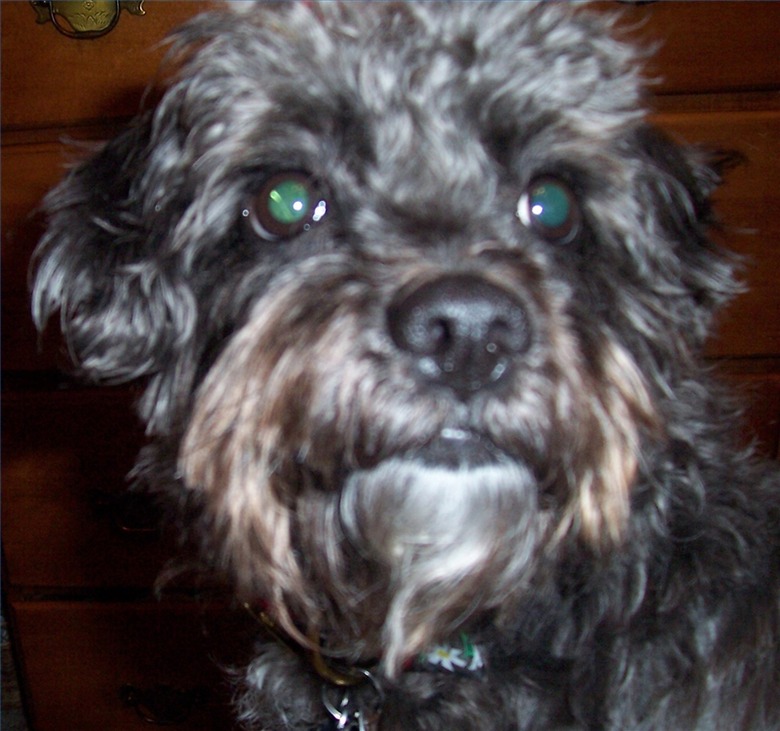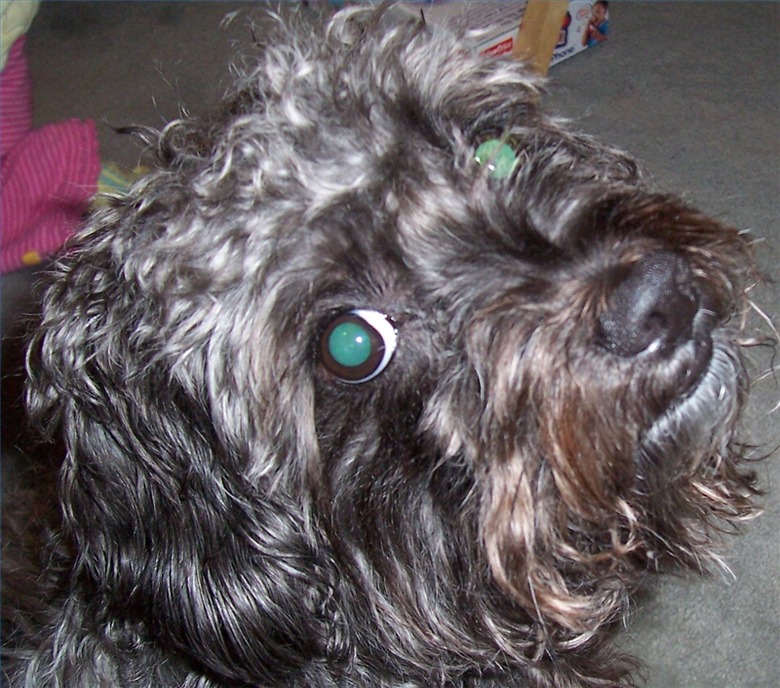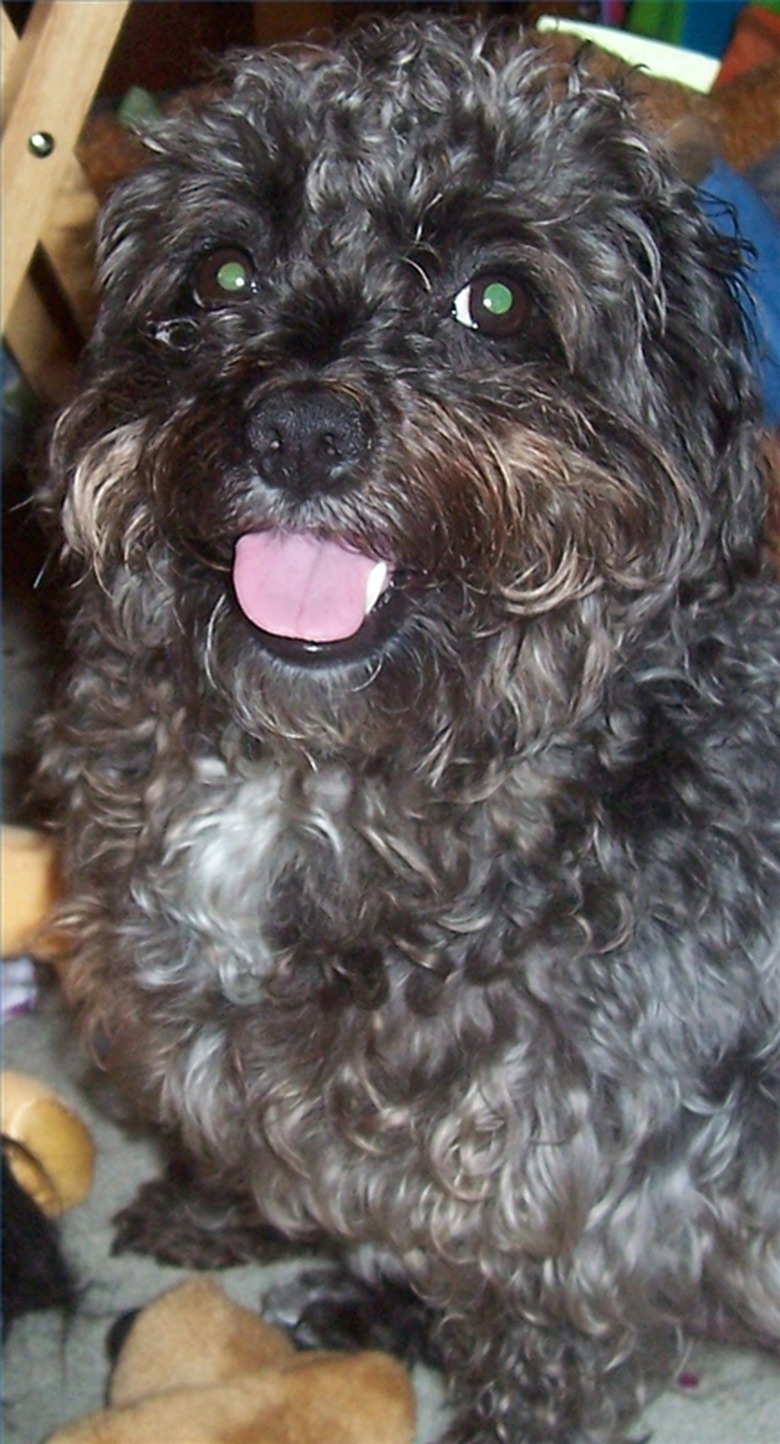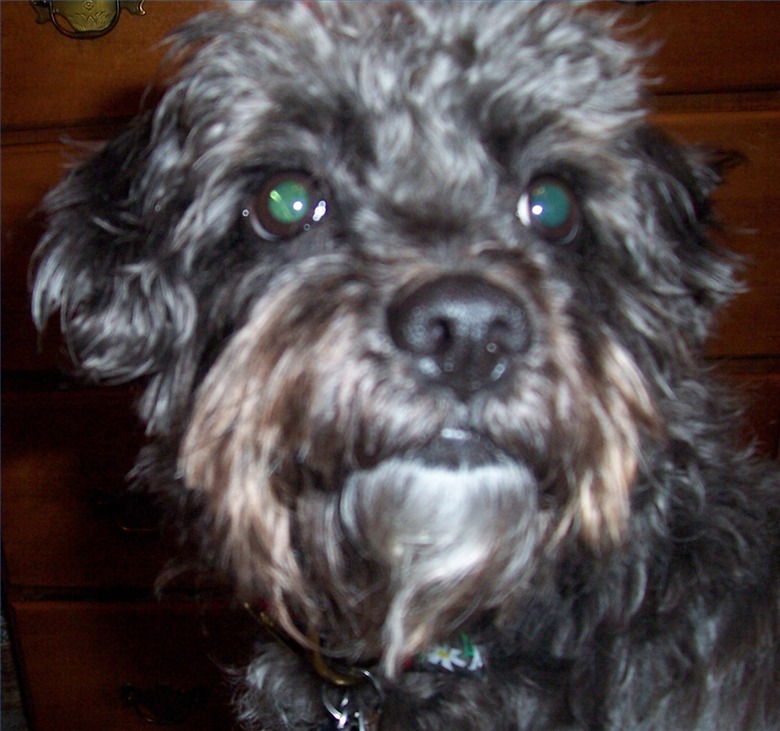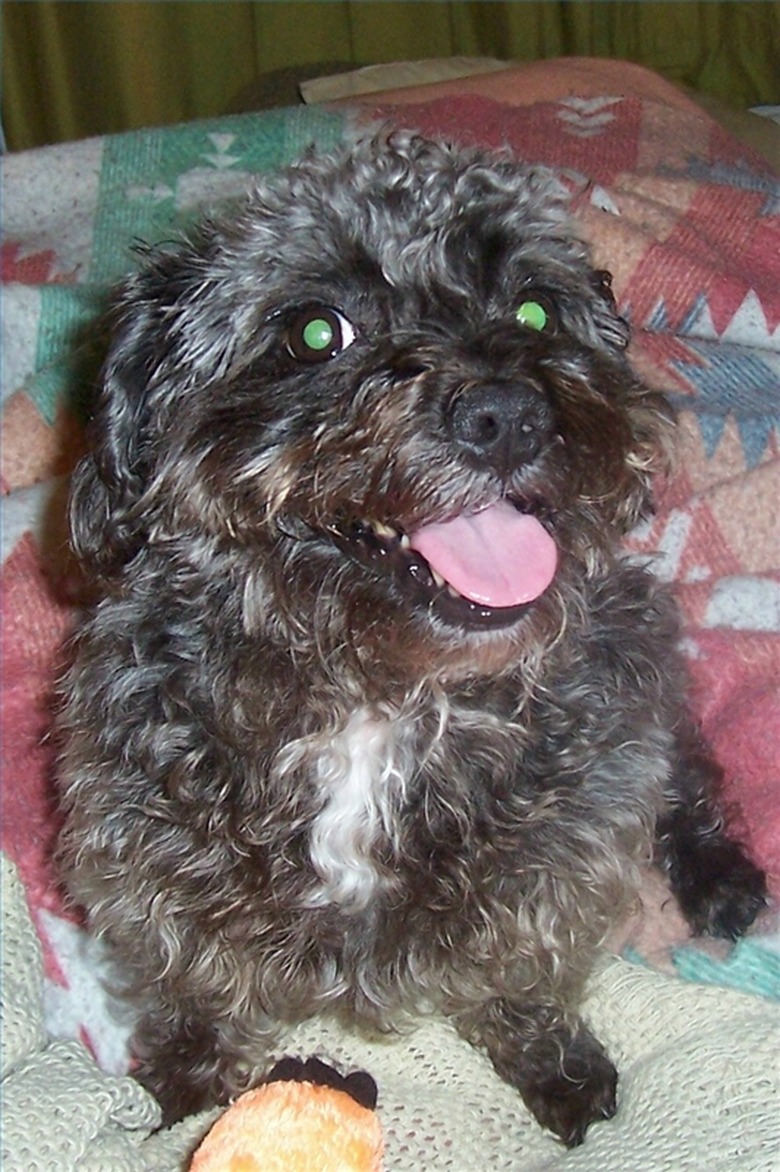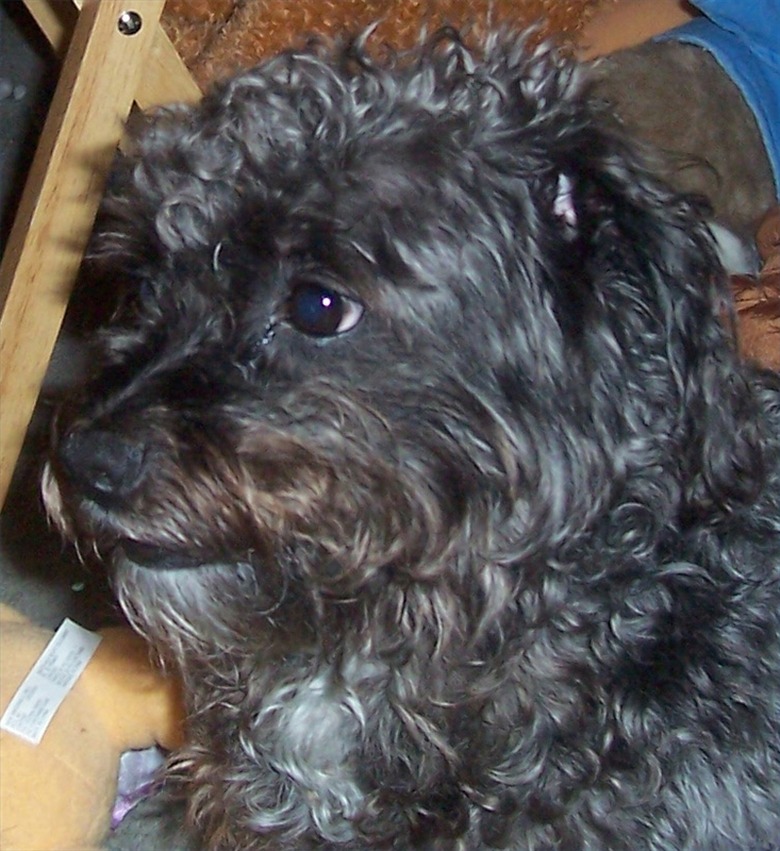How To Care For A Schnoodle Dog
Things Needed
-
Premium dog food
-
Quality dog treats
-
Heart worm and flea/tick protection
-
Dog grooming supplies such as a brush, comb, mild shampoo, cream rinse, dog leave-in conditioner
-
Dog bed
-
Dog crate (optional)
-
Dog toys
-
Dog apparel (optional)
Warning
Some schnoodles have a tendency to bark frequently, especially the toy size. Some schnoodles do not like strangers once they reach adulthood.
Tip
Love your dog and you will have a happy, affectionate dog. Schnoodles have a life expectancy of 15 years. Some have lived as long as 18 years. Schnoodles are hypoallergenic and non-shedding. People with allergies can usually have a schnoodle as a pet. Crate training is a good way to help house train a schnoodle puppy. If the puppy sleeps in the crate at night, she will not want to soil it. She will then wait to potty when you take her outside.
If you like schnauzers and poodles, you will love the cross between the two–a schnoodle. The schnoodle is an affectionate dog and loves to be included in all family activities. She will be devoted to the kids and have the energy to play. This is a dog who is just as happy to snuggle in your lap as she is to go on a long brisk walk. Highly intelligent, a schnoodle can become a therapy dog and compete in agility training. How you care for a schnoodle can affect her health and temperament. Here is a guide for the proper care of schnoodles.
Step 1
Select your schnoodle's veterinarian and get her all the necessary vaccines. Schedule your dog to be spayed or neutered to protect your dog from many reproductive health problems. You will also need heart worm and flea/tick protection. You may also consider an ID chip to help locate your pet if she ever gets lost.
Step 2
Get all necessary dog care supplies. You will need food, a dog bed, crate, toys, and grooming aids. Schnoodles love to play tug-of-war with plush dog toys. They also have fun chasing a ball and chewing on raw hide.
Step 3
Buy premium dog food and quality dog treats. The best dog foods have meat and vegetables as the first ingredients. Stay away from foods and treats containing large amounts of fat, artificial colors, and fillers. A wholesome dog biscuit is the best type of treat. Quality food is very important because schnoodles often have sensitive stomachs.
Step 4
Groom your schnoodle regularly. Most schnoodles have silky, wavy, non-shedding, hypoallergenic fur. Their coat is often medium to thin in thickness and very easy to groom at home. Schnoodle fur is usually fine-textured and prone to tangles. Buy a slicker brush and metal comb designed for fine fur. Brush your dog daily to avoid tangles; your dog will love the attention. Wash your dog with a mild shampoo and moisturizing cream rinse designed for dogs. Gentle products will keep your schnoodle's sensitive dry skin hydrated and comfortable.
Step 5
Protect the schnoodle's sensitive skin. Schnoodles tend to get patches of dry skin so keep your dog's skin moisturized between shampoos with a dog leave-in conditioner or a little olive oil. Spray on some conditioner during a daily brushing. You can substitute the conditioner for olive oil. Pour a small amount of olive oil in your hands and then apply it to your dog's fur. Massage the oil into the dog's skin.
Step 6
Exercise the schnoodle. The schnoodle can get enough exercise running inside an enclosed yard or going for a daily walk in the neighborhood. They do not require a lot of daily hard exercise because they will tire out and want to nap. The dogs have frequent short bursts of energy for walking or active play. You will witness a common schnoodle ritual of an excited schnoodle racing around at top speed, often growling and barking playfully, for short periods of time. Some have called this ritual the "Schnoodle Marathon." They are very playful.
Step 7
Socialize your dog early. Schnoodles can be aggressive toward other dogs and strangers without proper socialization. They are very loyal and protective of their family. Even the smallest schnoodle will try to take on a large German shephard so keep her on a leash whenever you take her out for walks, even if she is well-trained.
Step 8
Enroll your dog in obedience training. The schnoodle can be very strong willed and needs obedience training to accept you as the dominant member of her pack. You can try to teach basic commands to a toy or miniature schnoodle yourself. However, a giant schnoodle will need professional obedience training because the large breed is more aggressive.
Step 9
Teach your children how to be gentle and respectful of the dog. Schnoodles love children and are great family pets. Your schnoodle can be a loyal friend to your child if treated with respect, gentleness and love. They will be great playmates.
Step 10
Make time each day for snuggling and play. Schnoodles need a lot of attention and will demand it. They love to be included in all family activities whether it is laying on your feet while you watch TV or tossing a ball. The good news is she will be perfectly happy to snuggle if you don't have time to play.
Always check with your veterinarian before changing your pet's diet, medication, or physical activity routines. This information is not a substitute for a vet's opinion.
